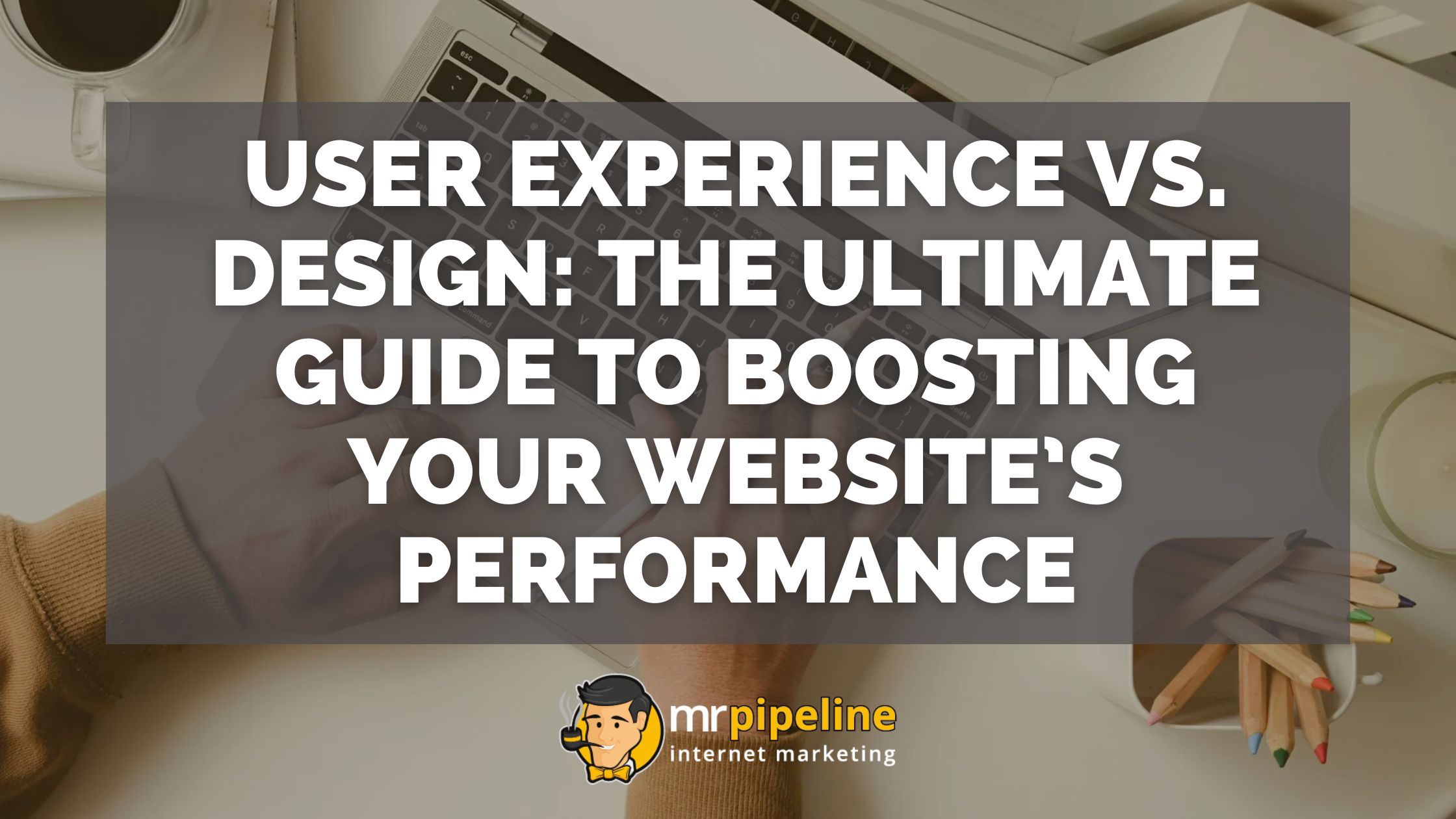- July 1, 2024
- Online Marketing
- Comments : 0
User Experience vs. Design: The Ultimate Guide to Boosting Your Website’s Performance
When it comes to your business website, the balance between user experience and design is significant. It not only matters that your website looks good but more importantly it functions effectively to meet your users needs.
Understanding User Experience (UX)
User Experience (UX) refers to the overall experience of a person using your website. It covers every part of how users engage, from navigating the interface to performing tasks and achieving objectives. Key components of UX include:
- Ease of Navigation: Visitors should be able to find what they’re looking for quickly and easily. A well-structured menu, clear headings, and a logical flow are essential.
- Loading Speed: A slow website can frustrate users and lead them to exit your website and navigate somewhere else. A slow website also isn’t favorable to search engines. It’s important to ensure that your website loads quickly to keep visitors engaged.
- Mobile Responsiveness: With many users searching and accessing websites from their mobile devices, it’s crucial that your website is built to be mobile-friendly. This means that when your website is viewed on a mobile device, it automatically adjusts its layout, images, and functionalities to fit the screen size of your device.
- Interactive Elements: Forms, buttons, and links should be easy to find and use, guiding the user smoothly through their journey.

The Role of Design
While UX focuses on functionality and ease of use, design is all about the visual elements that create a lasting impression. Good design grabs attention, communicates your brand identity, and makes your website visually appealing.
Key Elements of Good Design
A visually appealing website captivates visitors and communicates your brand’s identity. Here are the crucial design elements that create an attractive and effective online presence.
- Visual Hierarchy: Size, color, and placement to should guide visitors’ attention to the most important elements first.
- Consistent Branding: Your website should reflect your brand’s colors, fonts, and style to create a cohesive look.
- Engaging Imagery: High-quality images and graphics can make your site more attractive and engaging.
- Typography: Fonts should be easy to read and reflect your brand’s personality.

Balancing UX and Design
A successful website should strike a balance between UX and design. A visually stunning website that’s hard to navigate won’t retain visitors, while a highly functional but unattractive site may fail to attract them in the first place. Here are some tips for balancing UX and Design:
- User-Centric Approach: Always keep your users in mind. Conduct user testing to gather feedback on both the design and functionality of your site.
- Simplicity is Catchy: Avoid overloading your website with too many design elements. Focus on a clean, simple design that enhances usability.
- Consistent Layouts: Consistency in design and layout helps users know what to expect as they navigate your site.
- Prioritize Content: Ensure your design highlights the most important information and guides users to take the desired action.
- Frequently Optimize: Regularly review and update your website based on user feedback and performance data.

Practical Steps to Enhance Your Website
Improving your website’s performance doesn’t have to be complicated. You can follow these actionable steps to enhance both the user experience and design, driving better results for your business.
Improve Loading Times
Use tools like GTmetrix to analyze your website’s loading speed and discover ways to improve.
Optimize for Mobile
Ensure your website is fully mobile-responsive and provides a great experience on all devices.
Enhance Visual Appeal
Update your website’s design to align with your brand identity. Use high-quality images and ensure a consistent visual hierarchy.
Implement Analytics
Use tools like Google Analytics to track user behavior on your site. Use this data to make informed decisions about UX and design improvements.
Balancing user experience and design is fundamental for creating a website that attracts visitors, keeps them engaged, and converts them into customers. As a home service business owner, focusing on both aspects will help you build a strong online presence and drive more leads to your business.
Is it time to update your website? Run a free website analysis.
Learn more about our Lead Machine Websites.







